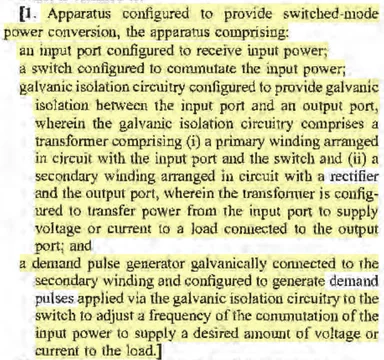Many years ago now (I'm so old), then-Judge Connolly (now Chief Judge Connolly) brought forth onto this district the gift of the word limit (at least in cases assigned to Judge Connolly). Nevermore would Delaware counsel spend hours futzing (technical term) with fonts and orphan control (it really sounds ominous to put those words together) in an effort to get our briefs down to the mandated 20 pages (this paragraph has waaay too many parentheticals).
For a time it seemed we would have a new golden age of beautiful briefs where every section began proudly atop its own page.

But alas, the conversion to a word limit spawned its own set of tactics to limit the number of words that must be counted. One such tactic—borrowed, in fact, from the days of the page limit—is the use of a table of abbreviations at the front of the document. Judge Connolly's opinion yesterday in Synopsys, Inc. v. Bell Semiconductor, LLC, C.A. No. 22-1512-CFC (D. Del. Dec. 6, 2023) (Mem. Op.), neatly illustrates the pitfalls of this method.
The infringement defendant, Synopsis (plaintiff in the DJ action), moved for SJ of no indirect infringement. As a result of filing three other SJ motions and two Dauberts, Synopsis was running up against the combined word limit. Accordingly, each of the SJ briefs had a table of abbreviations right after the table authorities, seting forth the definitions of, among other things the "asserted claims." The body of the brief, however, did not specifically mention this table and just referred to the Asserted Claims generally throughout.
Chief Judge Connolly found this practice unclear, particularly because the cover motion requested summary judgment of no indirect infringement of [list of patent nos.] without any reference to specific asserted claims:
. . . I assumed when I read the opening brief that "Asserted Claims" referred to all the claims of the six Patents-in-Suit listed in the motion. After reading the answering and reply briefs and conferring with my law clerk, however, I realized that a "Table of Abbreviations" attached to Synopsys' opening brief defines "Asserted Claims" to be a subset of the claims of the Patents-in-Suit. (No mention of the Table of Abbreviations is made in the body of the opening brief.) . . .
I could have, and arguably should have, ended my review of the motion at that point. Synopsys is a sophisticated company with vast resources. . . . If counsel see fit not to take the time to make their motion and briefing consistent and choose not to make readily clear in their briefing exactly what form of relief Synopsys is seeking, why should the Court with its limited resources do counsel's work and connect the proverbial dots?
Synopsis, at 3-4.
An attempt to save a dozen words almost cost Synopsis a winning summary judgment motion. From the opinion, it's not clear that Judge Connolly is forbidding the use of a table of abbreviations per se. Indeed, he notes, without explicitly endorsing, several ways Synopsis could have drawn his attention to the abbreviation—including specifically listing the asserted claims in the cover motion or proposed order, or simply mentioning that it was a defined term at some point in the briefing. I'd recommend doing one of those if you choose to include a table of abbreviations.
Tune in to my next post where we dig into the substance of the dispute. I don't want to give too much away but it includes the following line from Chief Judge Connolly:
But to say that the correspondence "identifies" infringement by Kioxia is the type of tricky (i.e., not to be trusted) language I have seen too often from BS's law firm.
Id. at 6
If you enjoyed this post, consider subscribing to receive free e-mail updates about new posts.




